With hot air sterilization
Series CB-S
Show products
A CO2 incubator is a gassed incubator that is used for in vitro cell cultivation. Cell culture is the process by which living cells are cultivated and propagated outside of an organism under controlled conditions. Cell cultures often form the basis of clinical and biotechnological research. Inside a CO2 incubator, an atmosphere is created that is as natural as possible in order to facilitate cell growth. The temperature, humidity, and CO2 content must match the cell culture requirements precisely.
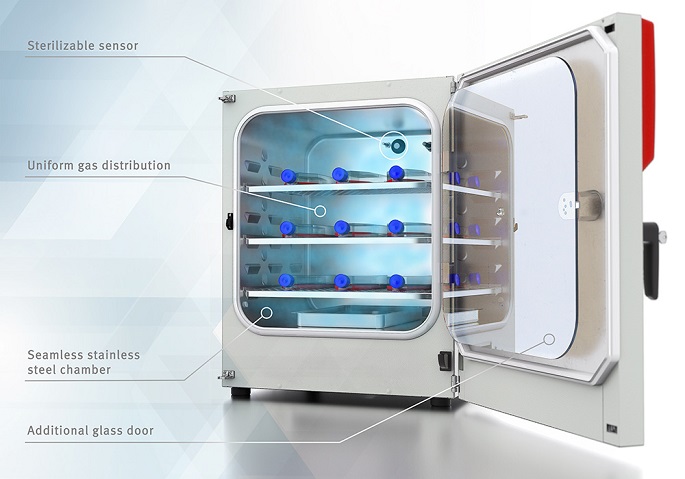
A CO2 incubator has an interior which is completely sealed off from the environment in order to create a defined atmosphere inside the unit. To enable laboratory technicians to still view the samples during the growth phase, most CO2 incubators feature a glass door as well as the regular door, which provides additional protection against contamination.
The interior is made of rust-resistant materials such as stainless steel and should have as few sharp edges and grooves as possible in order to avoid any places where contamination could be hidden. In the sensitive field of cell cultivation in particular, just one single germ can ruin weeks of work.
The incoming CO2 gas flows through a sterile filter and must be distributed evenly throughout the whole interior, as the samples are usually positioned on shelves at different heights. The challenge lies in creating homogeneity through the entire interior, so as to ensure a uniform concentration of CO2 for all samples at constant temperature and humidity conditions.
CO2 incubators are often used in medical research and the pharmaceutical industry. However, they also provide sterile conditions for cultivation in other fields where cells must grow in a completely germ-free environment.
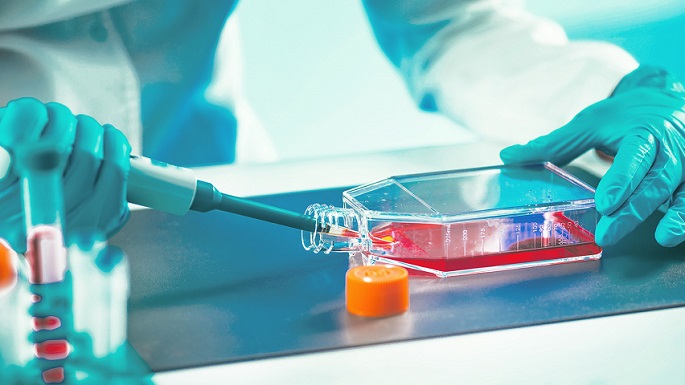
Tissue engineered products are biological medicinal products that contain or are composed of bioengineered cells or tissues. They are used to regenerate, restore, or replace human tissue.
Tissue engineering involves taking cells from a person's body and allowing them to grow into larger cell structures in the laboratory in order to replace or regenerate diseased tissue such as skin, cartilage or bone.
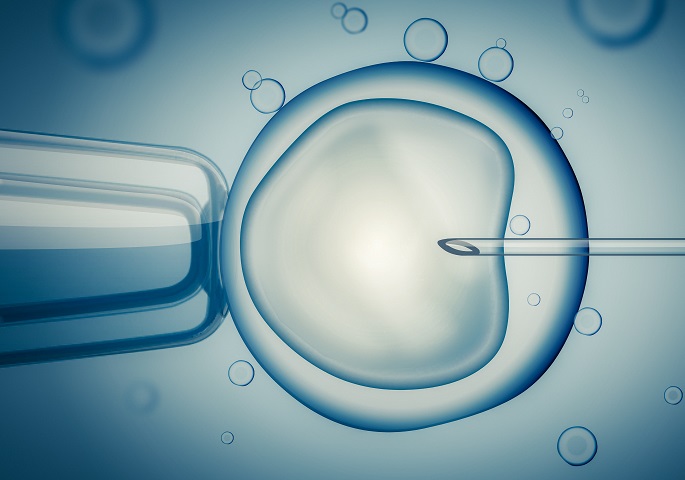
In vitro fertilization (IVF) describes a method of artificial fertilization used in human reproductive medicine. This application aims to fuse an egg and sperm cell together in a petri dish along with a cell culture medium.
The human embryos then start to fertilize and develop in a CO2 incubator, before being transplanted into the uterus after two to three days. Optimal conditions in the incubator chamber are approximately 37°C, 5 or 6 vol. % CO2, and humidity of around 95%.
Staff label the petri dishes very precisely to avoid mix-ups. The inner glass doors of the CO2 incubators mean the dishes can be monitored at all times too.
The process is similar in veterinary medicine, for example with cattle. The oocytes are put into a petri dish together with the sperm and, during an incubation period of 21 hours, the sperm fertilize them. On the eighth day after fertilization, the embryos are transferred from the CO2 incubator into the recipient animals.
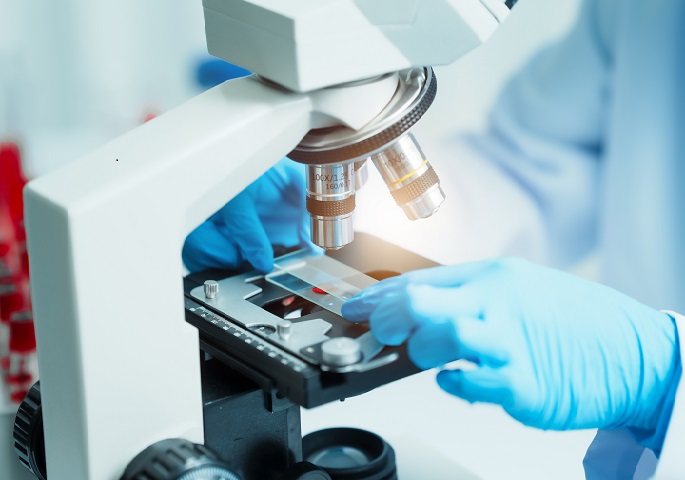
The study of cell cultures plays a crucial role in the diagnostic analysis of pathogens. The results obtained from such investigations enable precise proof of hygiene levels to be formulated, and the degree of viral resistance to biopharmaceuticals to be evaluated. One method often used in this context is the swipe sample, where cell cultures which are susceptible to viruses are exposed to them in order to test their biological function.
CO2 incubators are the right tool for the various different process steps involved, such as thawing and transferring the cells, as well as infecting the cell lines and dyeing the cell cultures. During this application, conditions in the interior are usually set to 37°C and 5 vol. % CO2.
The samples are analyzed after 72 hours at the latest. The blue coloration of the cell layer makes it possible to characterize the plaques in more detail either with the naked eye or under a microscope.
BINDER CO2 incubators are particularly good for diagnostic purposes or virus identification, since they maintain extremely stable incubation conditions. The inner glass doors for segmented access help here too. What's more, the risks of cross-contamination and the silent spread of contamination are reliably eliminated at all times thanks to automatic hot-air sterilization at 180°C.
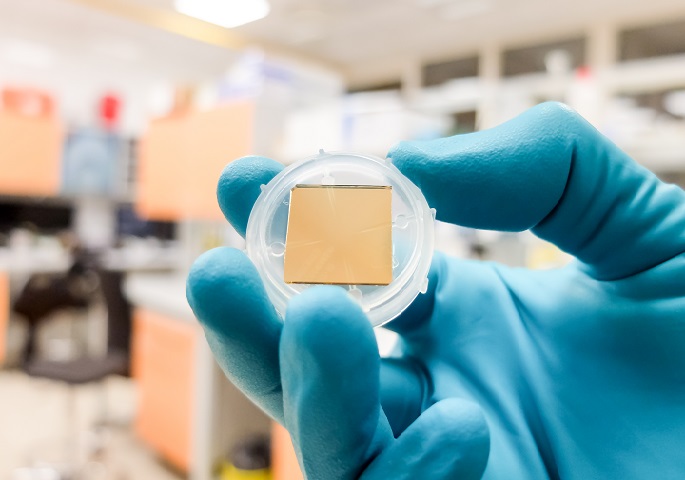
Biosensors comprise a biological detection element and a physical sensor (transducer) that are in direct contact with each other. The biological component can consist of an enzyme, an antibody, DNA, receptors, or entire cells and tissue sections. The interaction between the substance being tested and the biological component produces a biochemical signal which is converted into an electrical or optical signal by the transducer. Biosensors are generally categorized according to the physical measuring principle on which they are based – there are electrochemical sensors, optical sensors, and whole-cell biosensors. Biosensors are used in fields such as medicine, food quality control, and environmental analysis. One of the most well-known examples are the enzyme sensors used to measure glucose.
An impressive example: cardiomyocytes from embryonic hens were reaggregated in a rotation culture into spheroids (3D architecture) and connected to microelectrodes. Reference substances were used to test the extent to which statements could be made about applying a stimulus to a living system. The spheroids were produced in petri dishes in CO2 incubators at 37°C, 5 vol. % CO2, and 72 rpm and 20 mm orbit.
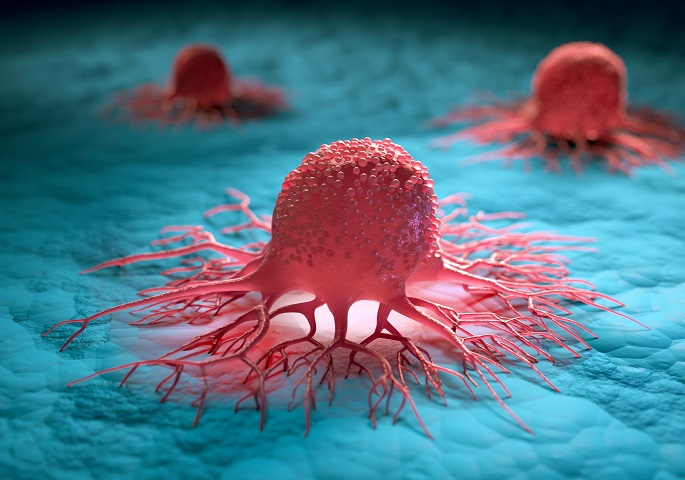
CO2 incubators play an important role in preparing samples and tests in all areas of cancer research such as drug research and the development of 3D invasions, assays, and biosensors – from a simple monolayer through to the reproduction of patient tumors by means of 3D cell culture models (drug research and development of treatments).
In the fields of immunology and tumor biology (how malignant tumors develop), CO2 incubators are used at 37°C, 5 vol. % CO2, and 95% relative humidity under normoxic conditions, as well as CO2/O2 incubators at 37°C, 5 vol. % CO2, and hypoxic 1 vol. % O2, depending on the cell cultures involved.
In clinical research – for example, into oncogenes and tumor suppressors – CO2 incubators are used at 37°C and 5 vol. % CO2 under normoxic conditions.
Various guidelines regulate how CO2 incubators must be handled. In the pharmaceutical industry, the requirements of Good Laboratory Practice (GLP) and Good Manufacturing Practice (GMP) are described in 21 CFR Part 11. They regulate how to handle measuring instruments, which must be calibrated and tested at specific intervals. A data logger must record all test parameters and forward them to the software and the storage medium, where they are processed and archived.
You will find everything you need to know about GLP in our whitepaper: "Good Laboratory Practice" – What is behind all this?
From what point is a CO2 incubator ready for use?
In total, the CO2 incubator goes through three steps during validation:
Three unit features that can reduce the risk of contamination:
Intuitive navigation makes processes simpler and ensures there are no barriers hindering work. It is also important that CO2 incubators are easy to dismantle, as they have to be cleaned and reloaded on a regular basis. The time needed for this process can vary between manufacturers.
When it comes to the interior, less is more: it should be simple, clear, easy to clean, and low-maintenance. Potential contamination surfaces must be kept to a minimum in order to guarantee the best possible growth conditions for cell and tissue cultures.
Hot-air sterilization should be easy to perform at the press of a button. In order to comply with standards, it should be possible to decontaminate the entire interior at 180°C.
The highest possible humidity will prevent cell cultures from drying out. A smart humidity management system ensures that humidity levels are high, with evaporation of the medium kept to a minimum and, where possible, no risk of contamination.
The most important benefits of a good humidity management system:
The aim here is to achieve completely homogeneous gas distribution in the interior. A suitable CO2 supply system is one that guarantees a steady pH value in the culture medium at all times so as to provide the ideal conditions for cell growth.
A CO2 sensor with a clever design reacts quickly to changes in the gas concentration, thereby ensuring it is stable in the long term. CO2 incubators are available with their CO2 sensor either outside or inside the incubation chamber.
Advantages of the sensor being inside the incubation chamber:
On that basis, the sensor should be located inside the incubation chamber, but it is essential that it is also protected against high temperatures.
CO2 incubators are available with various exterior and interior dimensions, as well as different temperature, humidity, and CO2 values. You should always analyze the applications you need the CO2 incubator to carry out in advance. But in every case, a CO2 incubator should reliably prevent contamination, keep the CO2 concentration in the interior stable, and demonstrate a high level of temperature precision.
Cell cultivation and contaminationn
Contamination is a universal problem when working with cell cultures. Preventing contamination requires the use of sterile methods as well as careful handling of cultures. The CO2 incubator also plays an important role because it provides not only cell cultures but also many undesirable microbes with ideal growth conditions. Accordingly, every high-quality CO2 incubator offers several features for preventing contamination. A judicious decision for the purchase of a CO2 incubator cannot, however, be made exclusively on the basis of the sum of its technical details. Instead, the overall systems and, in particular, the anti-contamination designs must be compared and evaluated. This shows that complex systems are not intrinsically more safe than simple ones. It should be possible to reliably prevent contamination with the unit with speed and ease but without incurring high costs for consumables.
Our infographic “Preventing contamination in the laboratory” shows you how you can improve your contamination management with CO2 incubators.
CO2 incubators with additional process control will be required for complex cultivation experiments or individual growth environments, such as under hypoxic conditions. They will provide the features necessary to perform even sensitive incubation tasks with aplomb.
The running costs will determine how cost-effective the decision you make is. These costs include:
Simple cleaning saves time and money: it can take different amounts of time to clean various CO2 incubators properly, and this can have a huge impact on personnel costs if multiple units and short loading intervals are involved.
Consumables can also be a decisive cost factor, as they can be as high as €1,500 per year for some manufacturers. Keep your running costs low by choosing a CO2 incubator that has no need for consumables.
It is only possible to determine whether buying a particular unit model will still be a worthwhile investment after years of use by factoring in the running costs.
CO2 incubators are gassed incubators that are used whenever cells need to grow in a completely germ-free environment. They are often used in medical research and the pharmaceutical industry.
CO2 incubators need to create the best possible growth conditions for cell cultures while also minimizing the risk of contamination. The units should therefore be easy to clean and condensation-free. Other important factors that should be considered when choosing a CO2 incubator include how it is used, the interior design, humidity management, and the type of CO2 supply.
Read our Buyer's Guide "6 points to consider when buying CO2 incubators" for more information.
BINDER offers a broad range of CO2 incubators for all types of cell cultivation, from standard applications to sensitive incubation tasks.